For decades, American manufacturing has faced intense competition from cheap imports, outsourcing, and trade policies that have favored globalization over domestic production. But with the return of tariffs as a major policy tool, the question remains: Will tariffs revitalize American manufacturing, or will they create unintended consequences that harm the economy?
Recent tariff implementations, particularly those targeting imports from China, Canada, and Mexico, have reignited this debate. While critics argue that tariffs increase consumer costs, history shows they can be a powerful tool for strengthening domestic industries, protecting American jobs, and ensuring long-term economic security.
In this article, we’ll examine the role of tariffs in shaping American manufacturing, examining their historical impact, modern applications, and whether they truly benefit businesses that produce in the USA.
A Historical Perspective: Tariffs Built America’s Economy
America’s First Revenue Source
Tariffs were once the backbone of the U.S. economy. Before the federal income tax was introduced in 1913, tariffs accounted for over 90% of federal revenue (Source: Tax Foundation).
From the early days of the republic, leaders like George Washington, Abraham Lincoln, and Theodore Roosevelt viewed tariffs as essential for building a strong, self-sufficient economy. The American System, championed by Henry Clay and supported by presidents like James Monroe and William McKinley, relied heavily on tariffs to protect nascent American industries from foreign competition.
Tariffs and the Industrial Revolution
Tariffs played a crucial role in the rise of American industry during the 19th and early 20th centuries. By limiting competition from cheaper foreign imports, the U.S. government created an environment where American manufacturers could thrive.
- Steel, textiles, and machinery industries flourished under protectionist policies.
- The U.S. became the world’s leading industrial power by the early 1900s, outpacing Britain and Germany.
- Tariffs funded infrastructure projects, such as the railroads, that connected the country and fueled economic growth.
However, following World War II, global trade policies shifted towards free trade agreements, leading to a steady decline in tariffs and an increase in outsourcing and reliance on foreign goods. The decline of tariffs coincided with the erosion of U.S. manufacturing dominance.
Modern Tariffs: The Trump Experiment and the Biden Continuation
Trump’s 2018-2020 Tariff Strategy
President Donald Trump reintroduced tariffs as a key economic tool, imposing steel and aluminum tariffs, tariffs on Chinese goods, and duties on washing machines and solar panels. The goals were:
- Rebuilding American manufacturing
- Reducing trade deficits
- Creating leverage in trade negotiations
Did It Work? The Data Tells the Story
Contrary to mainstream media narratives, many of these tariffs did not lead to sustained price increases. In fact, domestic manufacturing output increased in several key sectors:
- Washing machines: Prices briefly spiked after the tariffs were implemented but later dropped below pre-tariff levels. More importantly, Samsung and LG built manufacturing plants in the U.S., creating over 2,000 American jobs (Source: U.S. Census Bureau).
- Steel: Domestic steel production increased by nearly 10%, and despite initial price hikes, U.S. steel prices fell below pre-tariff levels by 2021 (Source: Bureau of Labor Statistics).
- Solar panels: Despite a 30% tariff, prices for solar panels continued to decline, proving that domestic manufacturing could compete and thrive with the right incentives (Source: Solar Energy Industries Association).
Critics argued that tariffs would cause runaway inflation, yet in 2018-2019, the U.S. inflation rate actually fell from 2.1% to 1.6% (Source: The Federal Reserve).
Biden’s Tariff Moves
Despite initial criticism of Trump’s tariffs, President Joe Biden doubled tariffs on solar panels in 2024, recognizing their effectiveness in boosting domestic production (Source: White House Fact Sheet). This bipartisan shift indicates that tariffs are not just a partisan tool but a necessary policy to rebuild American industry.
How Tariffs Support American Manufacturing Today
1. Encouraging Domestic Production
- When foreign goods are more expensive, companies are incentivized to manufacture domestically.
- Example: Companies in Canada are considering moving operations to the U.S. to avoid tariffs on exports to America (Source: The Globe).
2. Reducing Dependence on China
- The COVID-19 pandemic exposed vulnerabilities in global supply chains, particularly in reliance on Chinese manufacturing.
- Tariffs can encourage companies to reshore essential industries, reducing national security risks.
3. Job Creation in Manufacturing
- Every 1 job in manufacturing supports 7-8 other jobs in the economy (Source: NAM.org).
- More domestic production leads to a stronger middle class and higher wages.
The Potential Downsides and Risks
While tariffs have many benefits, they are not without challenges:
- Short-term price increases: Some goods may become temporarily more expensive before domestic production ramps up.
- Retaliatory tariffs: Countries like China, Canada, and Mexico could respond with their own tariffs, affecting U.S. exports.
- Industries reliant on global supply chains: Some manufacturers still depend on foreign components, and higher import costs could impact their operations.
However, these risks can be mitigated by investing in domestic manufacturing infrastructure and strategically managing tariffs rather than applying them indiscriminately.
Final Thoughts: Tariffs as a Tool for America’s Future
When used strategically, tariffs can be a powerful force in rebuilding American industry. The historical evidence is clear: America thrived when it protected its industries and suffered when it allowed unfettered free trade to decimate domestic production.
- Tariffs alone will not solve all economic problems, but they can create a competitive environment for American businesses.
- With the right policies, tariffs can lead to more Made in the USA products, stronger domestic supply chains, and a more resilient economy.
The future of American manufacturing depends on whether we continue to prioritize domestic production—or let short-term economic concerns dictate long-term national prosperity. The choice is ours.

